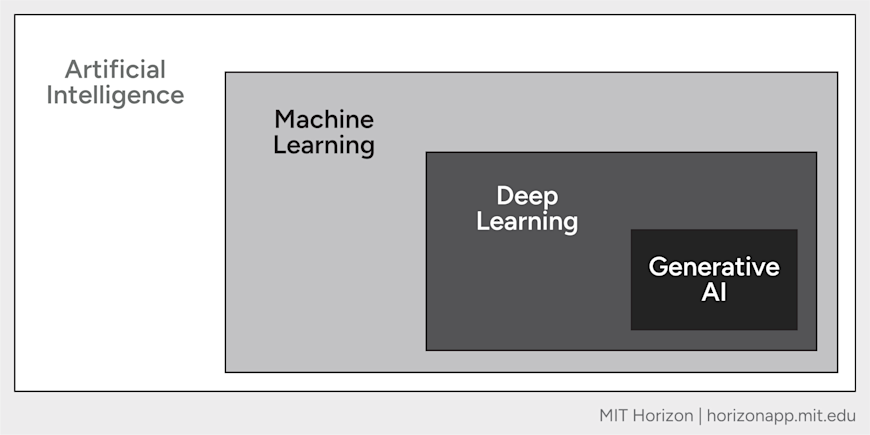


Artificial intelligence is the use of computers to make automated decisions or predictions. Most AI systems perform a single, defined task. Even relatively versatile systems such as ChatGPT are using one relatively narrow task—in ChatGPT’s case, analyzing and generating language and images—to yield impressive results across varied contexts.
Modern AI applications fall into two categories:
Though rule-based systems are still common, the most capable AI applications are increasingly reliant on machine learning systems that are structured as neural networks, a technique that learns tasks across a series of increasingly complex layers. Broadly speaking, machine learning systems are trained in one of three ways:
AI can make sense of complex information
By discerning patterns in data too subtle for humans to notice, AI can be useful for analyzing large amounts of information with many complex and interconnected variables.
AI systems can analyze and generate high-quality imagery and speech
Adobe, Google, Microsoft and other tech suppliers are incorporating generative AI systems into their products to create detailed text passages and illustrations from simple prompts.
AI can predict some trends or events more accurately than other software can
Instead of relying wholly on historical data to project future events, AI systems can use a range of techniques to make predictions that take into account changing conditions.
AI systems can adapt and improve over time
Many AI applications currently use machine learning algorithms that improve through training with little or no human intervention.
AI systems lack common sense, and they don’t perform equally well at different tasks
Although an algorithm might create the illusion of a mind at work, it’s not the fluid intellect of human consciousness. This makes AI systems specialists. Systems adept in one domain, such as detecting fraud or recognizing faces, can’t excel at others.
Most AI systems require immense amounts of data for training
Massive data sets require expensive hardware and lots of energy to gather and train on, and these data sets can lead to or result from privacy violations and copyright infringement.
Problems in training data can lead to poor results, and widespread public distrust of AI
AI systems learn to recreate the patterns they’re exposed to in training, including any errors or biases in training data—an issue many experts call the “garbage in, garbage out” problem.
Many sophisticated AI systems are opaque, so that even their developers cannot fully explain them
Referred to as the “black box problem,” this can make it difficult to determine accountability or suggest improvements when systems make mistakes.
Soon, AI will become as intelligent as humans
The reality: Researchers are still far from creating a machine that matches or exceeds human intelligence at a wide range of tasks, and experts disagree on how long this will take.
AI is a specific, single technology
The reality: AI is a broad term for many computing systems, and can refer to different techniques in different contexts.

AI is mostly used for high-profile applications where it appears to be human
The reality: AI is often used for mundane, behind-the-scenes business tasks.
AI is objective and free from bias
The reality: Training data can fail to match real-world circumstances, or reflect preexisting imbalances, and so AI systems can impact groups of people differently.
Organizations will grapple with how to integrate generative AI
Following the launch of ChatGPT and the ensuing hype around generative AI, many organizations are realizing that integrating the technologies into their workflows and products can be difficult.
AI will disrupt jobs, causing instability and unknown long-term outcomes
Advancements in AI have long caused unease about whether the technology will displace workers, making certain jobs obsolete and increasing unemployment. The rise of generative AI is amplifying those concerns.
AI will make robots more adaptable
Recent advancements in AI have enabled roboticists to experiment with new ways to program and train general-purpose machines to perform a wide range of tasks or adapt to new circumstances and actions.
Rising demand for hardware could limit AI development
As demand for computer chips purpose-built for AI outstrips supply researchers, start ups, and small- to medium-size organizations developing their own AI applications could risk falling behind large tech firms.